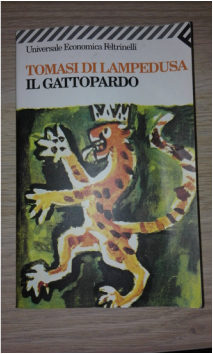| 1. Paperino (Donald Duck!) Unlike Jhumpa Lahiri, I first began learning the language by ear from family and friends, rather than studying properly with a teacher. So at the beginning I could only listen and speak, and that made reading difficult. When I started learning to read and write, I began with comic books! Comics are very popular with children here as a weekend treat, and they are available at all Italian edicole (news stands) for a couple of euros. As well as Paperino ('Little Duck', or Donald Duck in English) you can buy Topolino ('Little Mouse', aka Mickey Mouse) and Paperinik (a superhero version of Donald Duck, which I've never seen outside Italy!). Buying these comic books helped me start reading in Italian when I was still new to the language and found 'proper' books difficult - it was also a lot of fun. I still queue up occasionally to buy one of these comics on a Saturday morning, for old times' sake! |
| 2. Favole al Telefono (Tales on the Phone) This is a children's book which my sister gave me as a present the year after I began learning Italian. A little girl's father, an engineer, has to live away from home for work. Every night, he calls his daughter on the phone and tells her a different fairy tale. The stories have to be short, because he can't call her for long, and each one has something different and special about it to keep her entertained until the next night. For a long time I read one of these stories every evening too, looking up the words I didn't understand. The stories are short and simple, just right for someone learning a new language, but very beautiful. This book is one of the most popular Italian books abroad, and it's easy to see why - it's one of those children's books which has a kind of magic for readers of any age. |
| 3. I racconti (Short Stories) by Italo Calvino The year after reading Favole al Telefono, I took a night class in intermediate Italian. After that I was able to read more complicated short stories, including some by Italo Calvino. I read them in parallel in English and Italian, and found them captivating, especially the folktales Calvino collected from around Italy during the 50s and 60s. Folktales and fairy tales are perfect when you are learning a new language, just like children's stories, because of all the repetition! In fact, many of the stories I first encountered through Italo Calvino found their way a few years later into The House at the Edge of Night. |
| 4. Il Gattopardo (The Leopard) This was a book I read more recently, when I was getting more used to reading in Italian and had begun researching The House at the Edge of Night. As well as fairy tales, another perfect thing to read when you are learning a language is classic literature. The older language might be slightly difficult, but these books are usually available cheaply from bookstores and libraries, it's easier to find a parallel edition in your own language, and there are plenty of study guides, websites and film adaptations which will help you (an added bonus was that my entire family-in-law had to study this in school and could therefore explain it to me!). This is one of my favourite Italian books, which I read in parallel English and Italian, one chapter at a time. And I found myself finally reading long sections without picking up the dictionary. I also learned while reading this that a gattopardo is actually an ocelot, not a leopard - I guess The Ocelot doesn't have quite the same ring to it as a title... |
| 5. L'Amica Geniale (My Brilliant Friend) For me, these beautiful books about the lives of two young girls in post-war Napoli, which I've been reading on and off for the past year and especially since moving to Italy, come highly recommended in any language! When I began the first book, reading in Italian was a challenge (I do some research in Italian for my own books, and speak quite fluently, but I still hadn't ever read a long text in Italian without a parallel English text beside it). These books are perfect for someone learning to read a new language. When they start, the two characters are children, and the writing - which matches their thoughts and impressions - is quite simple. They grow up as the books continue. But the story is so compelling that I became immersed in it and by the time I got to the second and third books I started to forget that I was reading in Italian at all. I went on to read all four books in the series. In fact, I've got about thirty pages left of the last book and am saving them because I don't want the book to end, which is a high compliment to Elena Ferrante's skill as a storyteller! |





 RSS Feed
RSS Feed
